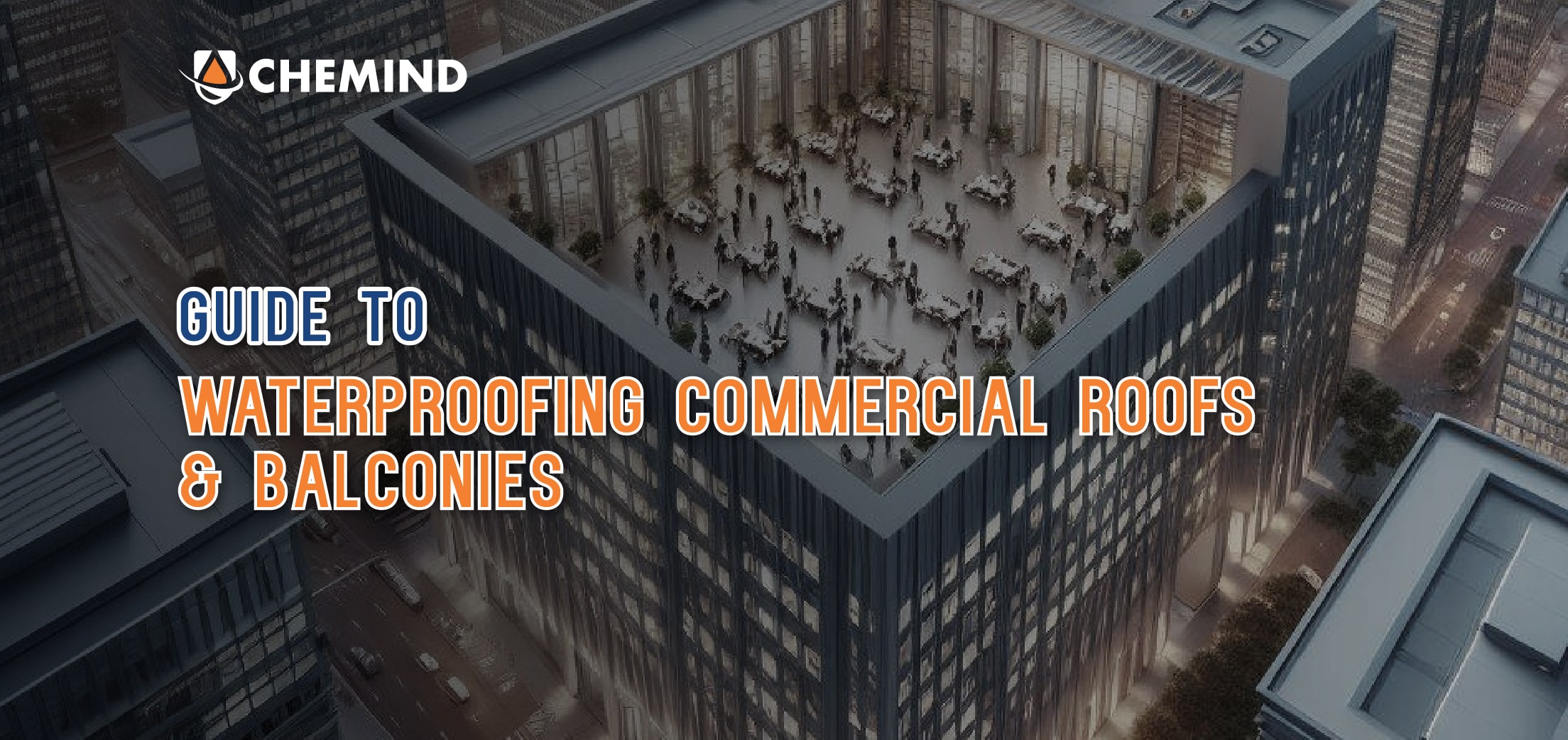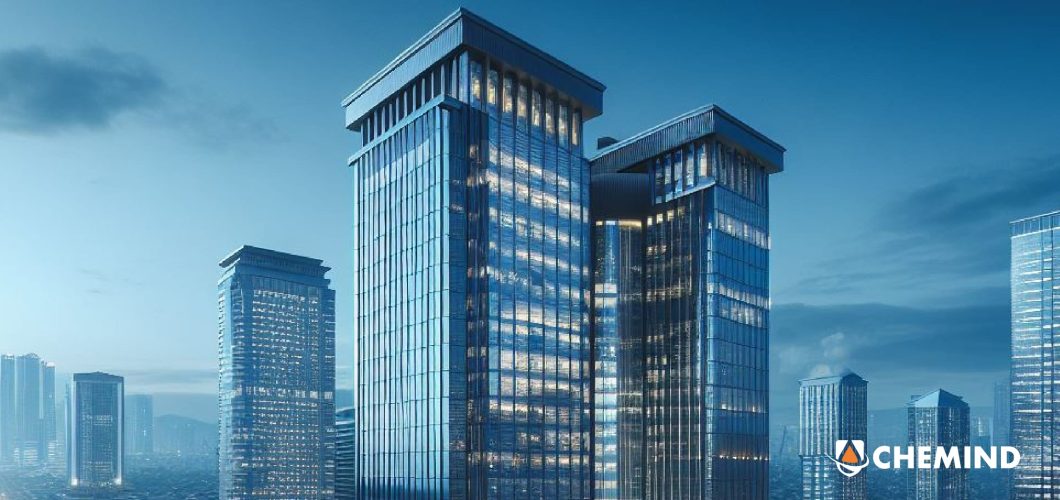Guide to Waterproofing Commercial Roofs and Balconies

A commercial site goes through lots of strain due to constant use by many, and even the strongest construction elements might show wear over time.
Waterproofing techniques have advanced greatly over the past 50 years, and buildings constructed in the last 20 years often risk their waterproofing giving out. Even if your current solution holds, it may just be a matter of time before you need an upgrade.
Whether you’re bolstering existing waterproofing or fixing faulty sections, letting water seep in is a risk to your building’s integrity. There’s some key preventative measures and telltale signs you can’t ignore.
Which parts of a building are prone to water seepage?
The first thing to get is the structure of a typical corporate building, and which parts are most vulnerable to water damage.
- Roofs, especially flat ones without good drainage
- Balconies and terraces
- Retaining walls
- Podium decks
- Planter boxes
- Basements
- Lift pits
- Cellars
- Expansion joints
- Water tanks
- Ponds
- Fountains
When you check, focus most on these areas. But don’t neglect the rest or think only these can be affected. They’re just the most at risk.
While checking your balcony and roof, it’s a good idea to at least take a quick look at the others on the list, even if you’re not doing a full checkup. Leaving one unchecked could let a problem build up, or spread. There’s no point having a sealed, watertight balcony if the room next to it is leaking.
Why does your commercial building need to be absolutely waterproof?
To Prevent Loss of Rent
The last thing you want is your property uninhabitable due to water leakage, so it’s essential to have it waterproofed from the start.
Staff Safety
Water and electricity don’t mix, so exposed wiring due to leaks poses a risk of fire or electrocution. And as the building’s owner, you’d be liable for any damages or injuries caused by your tenants. Mold and mildew from water can cause allergic reactions and respiratory problems, and lead to long-term illness. Bacteria can thrive in damp areas, leading to a ‘sick’ building that’s hard to lease.
Structural Reasons
Moisture rots timber, rusts metal, and causes concrete cancer. A structurally unsound building due to water damage can be a major disaster.
Hygiene Purposes
Damp areas attract pests, posing health risks to occupants and additional costs for owners.

Determining a risk or crack
There’s three main causes of wear and tear in commercial buildings.
First is time; even commercial steel is usually rust-free for only 25 years, and concrete for 50 to 60; waterproofing, especially sealants, have a finite lifespan and must be reapplied. This is especially true for older buildings that may have had waterproofing but have degraded over the years.
The second is a faulty initial application of waterproofing, which may not truly do its job. This is potentially hazardous, as it may appear to work while needing renewal.
The third is damage, mostly from water or unexpected elements, that may require early renewal of your waterproofing.
To determine your risk or current seepage, look for signs of pre-existing damage, and signs that your current solution may not last much longer.
Common symptoms and how to remedy them
Most water damage has simple, easy-to-see signs. Some common signs include:
Blistering of Felt or Plies
Air trapped between the felt, surface plies, or beneath the waterproofing membrane can warm and rise, causing blisters. This can lead to water damage.
If left unchecked, the water can slip through punctures and negate your waterproofing.
This is usually the case when a building has had substandard waterproofing. Projex specializes in membrane solutions for these situations, which can be applied directly over most other waterproofing.
Leaking from Floor Above
Leaking, particularly on balconies or from the floor above, may indicate degraded or faulty waterproofing. It’s simple to spot when inside, but on an external balcony, it can be hard to distinguish between leaking from roofing and rain dripping down from the floor above.
Have a look for any water that appears to seep from cracks, or any buildup under areas that should be undercover. This can lead to water damage, mold growth, and further cracking.
Pooling from the Floor Above
Puddles forming on a commercial roof can hasten the degradation of existing waterproofing materials. Physically changing the angle of a roof is expensive, so the best action is applying waterproof membranes and improving drainage. Good building practices state that the quicker water is drained, the less chance of waterproofing issues.
Most membranes won’t tolerate standing water, so more waterproofing won’t work unless paired with adequate drainage.
On top of this, one square foot of water on a flat roof can weigh as much as 5 pounds per inch. This can be managed with drainage systems or tiered elevation structures.
Roof piping, ventilation, and other piercing objects
A common failure point for moisture damage is where objects penetrate through the substrate or membrane. Sealant rings and other objects can represent a strong failure point for commercial roofs. Check around pipes and vents for cracks and signs of wear. This type of leak can spread to internal systems and wreak havoc.
Preventative checks
Regular checkups are key for preventing small leaks from becoming hazards. Include a thorough checkup of the building and fault points in your workplace safety list.
Try to do a simple check biannually, or whenever you feel you haven’t in a while. Do a thorough check once per year at minimum.
Use the common failure point list to begin your proceedings. Check all facets of each area, testing during and after rain. Being able to tell where water is seeping during storms is vital. The day after, accumulated pools indicate insufficient drainage.
Formulate a preventative plan to foresee issues before they happen. Fixing an issue before it forms is cheaper, especially for waterproofing. In cases of extreme degradation, multiple parties may need to be involved.
Hiring Waterproofing Contractors
What to use to waterproof your commercial property Chemind Industries recommends hiring a professional contractor for commercial-level waterproofing. For long-term solutions, using Chemind waterproofing solutions & systems fitted by trained professionals, are recommended. Find out more about hiring a reputable waterproofing contractors here.
Other popular post you might be interested
- 5 tips to waterproofing toilet and bathroom
- How to Prevent Water Damage to Your Home with an Effective Waterproofing System
- The guide to Waterproofing Membrane
- How to waterproof your bathroom and toilet with CHEMFLEX R100
- Benefits and disadvantages of waterproofing sheet system
- Water leaking in condominium apartment from upstairs. Who should repair?
- MEASAT Global RC Rooftop waterproofing works
- Benefits and Disadvantages of Liquid Waterproofing System
- Advantages and Disadvantages of Polyurethane (PU) Liquid Waterproofing
- House Waterproofing Contractor Guide for Malaysia Home – Type of Waterproofing
